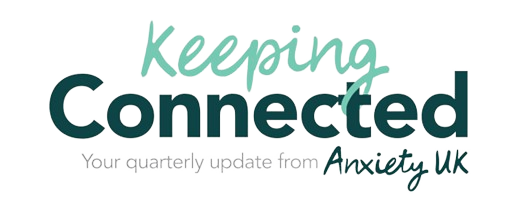Public speaking: overcoming your fear
By Anxiety UK
According to Nick Parker (previous co-ordinator of Anxiety UK’s former public speaking specialist helpline service), the fear of public speaking, or Glossophobia, is acknowledged to be amongst the most common of all social anxieties.
Following on from a 2023 phobia survey conducted by YouGov RealTime, it was revealed that Glossophobia was the third most common phobia on the survey with 15% of Britons admitting to having an overwhelming and debilitating fear of speaking in front of others. The survey also identified that 57% of women have some form of Glossophobia compared to 39% of men.
So how can we manage this?
Nick Parker explained that the art of speaking in public can be divided into two essentials. These are preparation and delivery.
Preparation
Ensure that you have researched your topic and know what you plan to say. Preparing cue cards to use on the day of your public speaking event may be helpful to use throughout your speech. Once you know what you plan to say, practice reading this aloud as much as possible, perhaps try reading this out to people close to you to build up your confidence.
Nick Parker also recommended practising in the mirror to practice gestures and facial expressions; explaining that the best time to practice your speech in the lead up to the event is the last thing at night. This allows your sub-conscious to work on this while you sleep. Practising once again the morning after will also help to consolidate what your sub-conscious has done. It is also recommended that you don’t practice your speech on the actual day of your event as according to Nick, the less attention your conscious mind gives to it, the more that your sub-conscious will. This then helps to produce the most polished product that it can.
Delivery
Before you are about to deliver your speech, focus on your breathing. Using our ‘Infinity breathing’ tool may be helpful to ensure you feel calm and relaxed. Focusing on your material rather than the audience can also be helpful to keep focused on your speech rather than your fear. Use the cue cards that you prepared to keep on track by glancing at these regularly as this helps to keep your concentration on your audience rather than reading word for word from your cue cards. Take deep breaths between pauses throughout your speech to help remain calm.
It is also important not to rush through your speech, as a steady pace will help to keep your audience fully engaged. In addition, making eye contact with your audience is also recommended as this helps to connect with your audience. Trying to make eye contact with as many people as possible gives your audience the feeling that they are the only person that you are speaking to, making this appear to be a more personable speech.
After you have completed your speech, it may be helpful to gain some feedback from your audience to determine what they thought of it and to identify any areas of improvement for future speeches.
Anxiety UK have many resources available online including our ‘Social Phobia/Social Anxiety Fact Sheet’ which can be found on our website here.
Anxiety UK are unable to guarantee the accuracy of the information provided. If you would like to write a blog for AUK please email [email protected] for more information.









